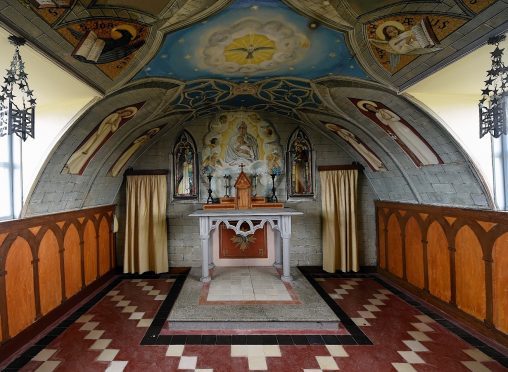Security has been increased at one of Orkney’s most famous landmarks ahead of a predicted bumper tourist season in the islands.
Visitors to the Italian Chapel on Lamb Holm are being charged for entry for the first time, while a team of custodians will watch over the World War II building while it is open.
The move is partly to control visitor numbers with more than 100 cruise liners due to dock in Orkney this summer.
It also follows the theft of three treasured wooden plaques in August 2014 from the beloved chapel, which was built by Italian prisoners of war who were placed in Orkney during the war.
The plaques, part of the Stations of the Cross adorning the Roman Catholic chapel’s walls, have never been recovered despite the theft despite widespread outrage and an international appeal for information by police.
The team of 11 custodians are being led by Helen Hume, who has previously served as caretaker at the chapel for 22 years.
She said: “The main reason is to control the number of people going in.
“there are 116 cruise liners booked for this year so they have book in 20 minutes slots so instead of, where in years gone by, there may have been or two or three buses here at a time now there will just be one.
“So it will just be 50 approximately that get in at a time and so I suppose that should give everybody a better experience.
“After the damage was done and the Stations of the Cross were stolen they put in the CCTV but the preservation committee have now decided to have custodians on duty so they watch what is going on and control things and preserve the chapel for future generations.”
She added: “When I was caretaker it was just a case of being here in the morning to open up and close it at night so there was nobody here to know what is going on.”
The chapel was built by the prisoners of Camp 60 on Lamb Holm, who were captured in northern Africa and out to work building the Churchill Barriers blocking access to Scapa Flow.
It was created by joining two Nissen huts together, while much of the ornate interior decoration was done by Domenico Chiocchetti who remained to finish the chapel even though the work was not completed until after the end of the war.
